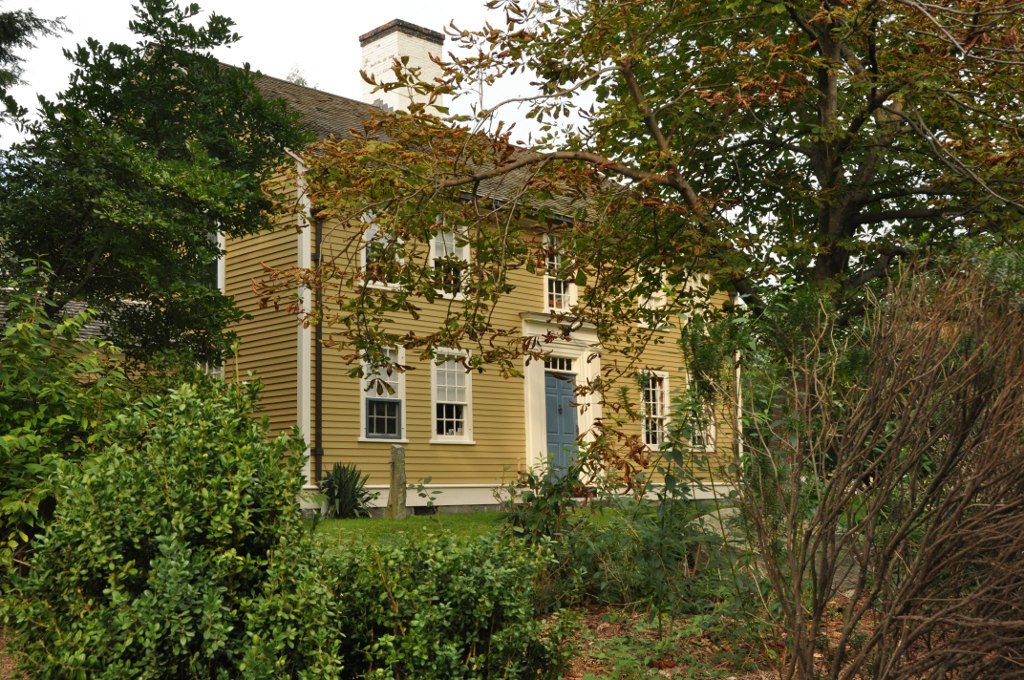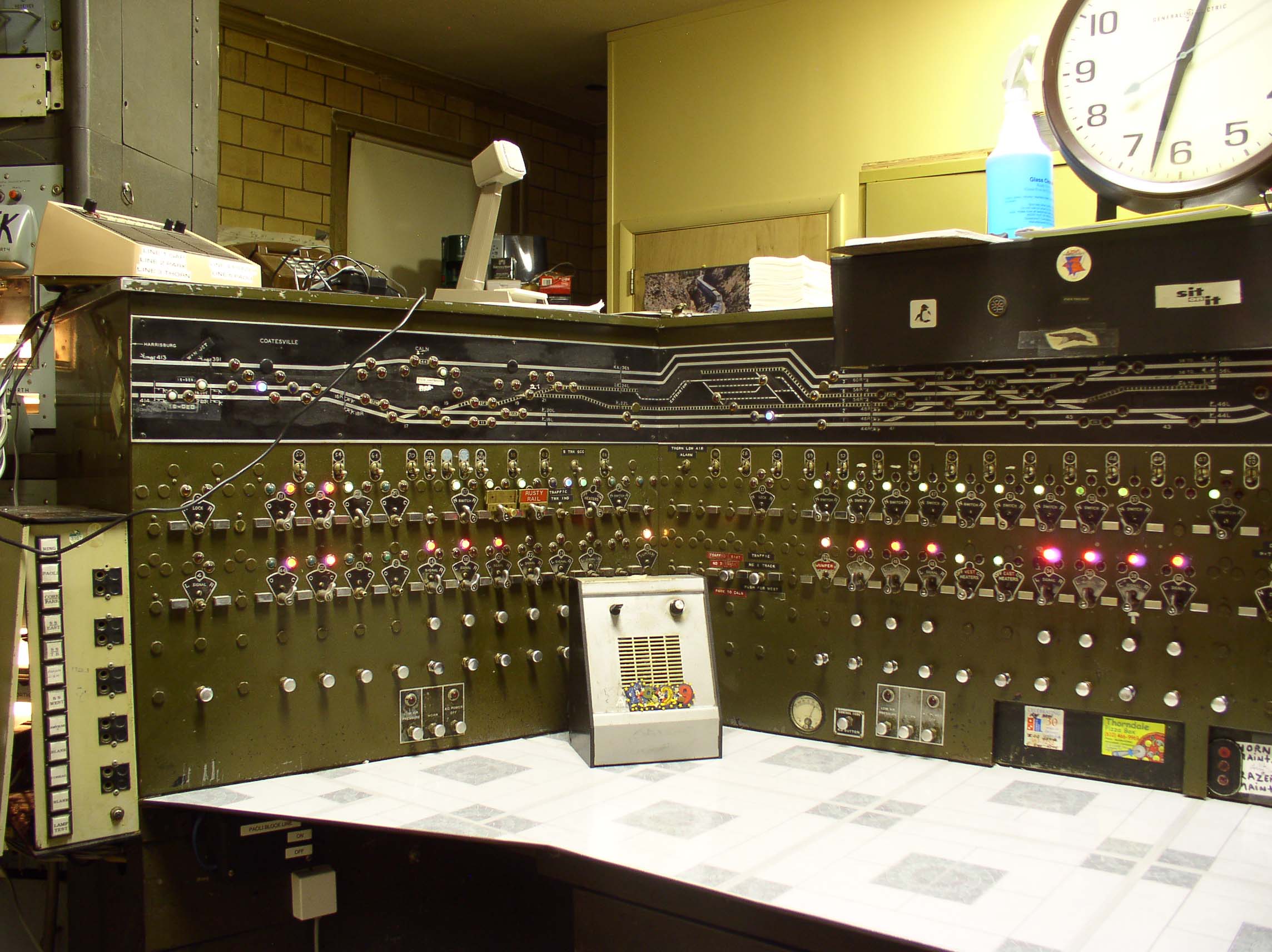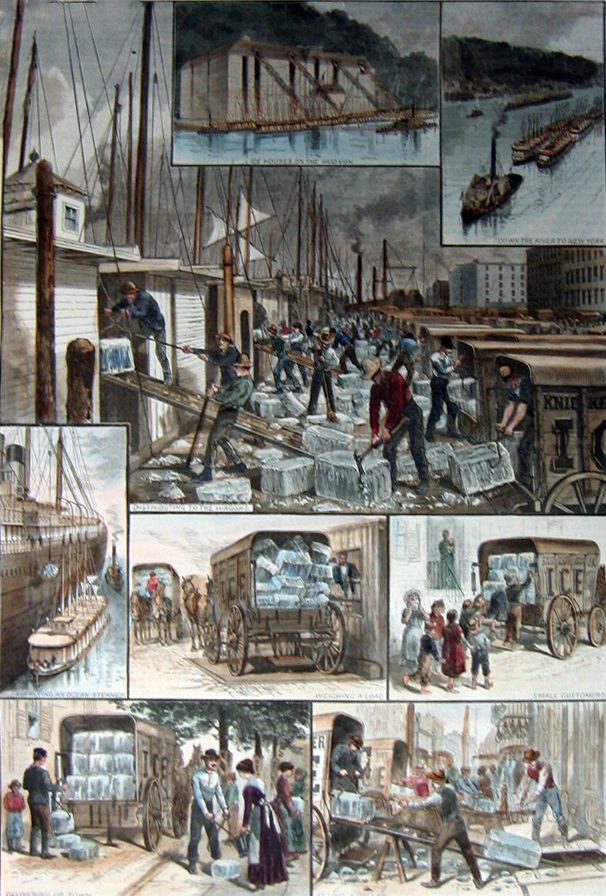|
Stony Brook Railroad
The Stony Brook Railroad (formally the Stony Brook Railroad Corporation), chartered in 1845, was a railroad company in Massachusetts, United States. The company constructed a rail line between the Nashua and Lowell Railroad's main line at the village of North Chelmsford and the town of Ayer, Massachusetts (then the village of South Groton) where it connected to the Fitchburg Railroad. Rather than running its own trains, upon opening in 1848 operations were contracted to the Nashua and Lowell; this arrangement continued until the Nashua and Lowell was leased by the Boston and Lowell Railroad in 1880. The Boston and Maine Railroad (B&M) took over operation of the Stony Brook in 1887 when it leased the Boston and Lowell Railroad. In 1983 the B&M was purchased by Guilford Rail System, which renamed itself Pan Am Railways (PAR) in 2006. Passenger service last ran on the line in 1961, but it saw significant freight service under Pan Am Railways. While it never owned rolling stock or ... [...More Info...] [...Related Items...] OR: [Wikipedia] [Google] [Baidu] |
CSX Transportation
CSX Transportation , known colloquially as simply CSX, is a Class I freight railroad operating in the Eastern United States and the Canadian provinces of Ontario and Quebec. The railroad operates approximately 21,000 route miles () of track. The company operates as the leading subsidiary of CSX Corporation, a Fortune 500 company headquartered in Jacksonville, Florida. CSX Corporation (the parent of CSX Transportation) was formed in 1980 from the merger of Chessie System and Seaboard Coast Line Industries, two holding companies which controlled a number of railroads operating in the Eastern United States. Initially only a holding company itself, the subsidiaries that made up CSX Corporation were gradually merged, with this process completed in 1987. CSX Transportation formally came into existence in 1986, as the successor of Seaboard System Railroad. In 1999, CSX Transportation acquired approximately half of Conrail, in a joint purchase with competitor Norfolk Southern Rai ... [...More Info...] [...Related Items...] OR: [Wikipedia] [Google] [Baidu] |
Stony Brook (Merrimack River Tributary)
Stony Brook is a tributary of the Merrimack River in northeastern Massachusetts, joining the Merrimack at Chelmsford. Its watershed includes the towns of Boxborough, Harvard, Littleton, Ayer, Groton, Westford, Tyngsborough, and Chelmsford. Its farthest upstream tributary is Beaver Brook, originating in Wolf Swamp in Boxborough, upstream (southwest) of the mouth of Stony Brook in the Merrimack. Beaver Brook passes through Mill Pond in the center of Littleton and ends at Forge Pond at Forge Village in Westford. Stony Brook originates as the dammed outlet of Forge Pond and continues northeast past Graniteville, the Stony Brook Reservoir (not to be confused with the Stony Brook Reservoir in Weston and Waltham), Westford Station, Nabnasset, Brookside Station, and West Chelmsford, reaching the Merrimack at North Chelmsford. Stony Brook is parallel through its course by the Stony Brook Railroad The Stony Brook Railroad (formally the Stony Brook Railroad Corporation), ch ... [...More Info...] [...Related Items...] OR: [Wikipedia] [Google] [Baidu] |
Circus Train
A circus train is a method of conveyance for circus troupes. One of the larger users of circus trains was the Ringling Bros. and Barnum & Bailey Circus (RBBX), a famous American circus formed when the Ringling Brothers Circus purchased the Barnum and Bailey Circus in 1907. In 1872 the P.T. Barnum Circus had grown so large that it was decided that they would only play at large venues, and that they would travel by train. P.T. Barnum had two of his partners, William Cameron Coup and Dan Costello, come up with a system to load the circus wagons on to railroad flat cars. Using a system of inclined planes, called runs, and crossover plates between cars, they developed a system of ropes and pulleys, along with a snubber post" to get the wagons on and off of the flat cars. They used horses to pull the wagons up the run and then would hitch a second team to pull it down the run cars (flats). The off-loading was much the same as loading, but a snubber post was used to help bra ... [...More Info...] [...Related Items...] OR: [Wikipedia] [Google] [Baidu] |
Westford, Massachusetts
Westford is a town in Middlesex County, Massachusetts, United States. The population was at 24,643 at the time of the 2020 Census. History Westford began as 'West Chelmsford', a village in the town of Chelmsford. The village of West Chelmsford grew large enough to sustain its own governance in 1729, and was officially incorporated as Westford that year on September 23. In the late 18th and early 19th centuries, Westford primarily produced granite, apples, and worsted yarn. The Abbot Worsted Company was said to be the first company in the nation to use camel hair for worsted yarns. Paul Revere's son attended Westford Academy and a bell cast by Revere graces its lobby today. A weather vane made by Paul Revere sits atop the Abbot Elementary school. By the end of the American Civil War, as roads and transportation improved, Westford began to serve as a residential suburb for the factories of Lowell, becoming one of the earliest notable examples of suburban sprawl. Throughout ... [...More Info...] [...Related Items...] OR: [Wikipedia] [Google] [Baidu] |
Nashua, New Hampshire
Nashua is a city in southern New Hampshire, United States. At the 2020 census, it had a population of 91,322, the second-largest in northern New England after nearby Manchester. Along with Manchester, it is a seat of New Hampshire's most populous county, Hillsborough. Built around the now-departed textile industry, in recent decades Nashua's economy has shifted to the financial services, high tech, and defense industries as part of the economic recovery that started in the 1980s in the Greater Boston region. Major private employers in the city include Nashua Corporation, BAE Systems, and Teradyne. The city also hosts two major regional medical centers, Southern New Hampshire Medical Center and St. Joseph Hospital. The South Nashua commercial district is a major regional shopping destination, lying directly on the Massachusetts border and taking advantage of New Hampshire's lack of sales tax. It is anchored by the Pheasant Lane Mall and numerous smaller shopping centers. ... [...More Info...] [...Related Items...] OR: [Wikipedia] [Google] [Baidu] |
Wye (rail)
In railroad structures, and rail terminology, a wye (like the'' 'Y' ''glyph) or triangular junction (often shortened to just "triangle") is a triangular joining arrangement of three rail lines with a railroad switch (set of points) at each corner connecting to each incoming line. A turning wye is a specific case. Where two rail lines join, or in a joint between a railroad's mainline and a spur, wyes can be used at a mainline rail junction to allow incoming trains the ability to travel in either direction, or in order to allow trains to pass from one line to the other line. Wyes can also be used for turning railway equipment, and generally cover less area than a balloon loop doing the same job, but at the cost of two additional sets of points to construct, then maintain. These turnings are accomplished by performing the railway equivalent of a three-point turn through successive junctions of the wye, the direction of travel and the relative orientation of a locomotive or r ... [...More Info...] [...Related Items...] OR: [Wikipedia] [Google] [Baidu] |
New England
New England is a region comprising six states in the Northeastern United States: Connecticut, Maine, Massachusetts, New Hampshire, Rhode Island, and Vermont. It is bordered by the state of New York to the west and by the Canadian provinces of New Brunswick to the northeast and Quebec to the north. The Atlantic Ocean is to the east and southeast, and Long Island Sound is to the southwest. Boston is New England's largest city, as well as the capital of Massachusetts. Greater Boston is the largest metropolitan area, with nearly a third of New England's population; this area includes Worcester, Massachusetts (the second-largest city in New England), Manchester, New Hampshire (the largest city in New Hampshire), and Providence, Rhode Island (the capital of and largest city in Rhode Island). In 1620, the Pilgrims, Puritan Separatists from England, established Plymouth Colony, the second successful English settlement in America, following the Jamestown Settlement in Virg ... [...More Info...] [...Related Items...] OR: [Wikipedia] [Google] [Baidu] |
Centralized Traffic Control
Centralized traffic control (CTC) is a form of railway signalling that originated in North America. CTC consolidates train routing decisions that were previously carried out by local signal operators or the train crews themselves. The system consists of a centralized train dispatcher's office that controls railroad interlockings and traffic flows in portions of the rail system designated as CTC territory. One hallmark of CTC is a control panel with a graphical depiction of the railroad. On this panel, the dispatcher can keep track of trains' locations across the territory that the dispatcher controls. Larger railroads may have multiple dispatcher's offices and even multiple dispatchers for each operating division. These offices are usually located near the busiest yards or stations, and their operational qualities can be compared to air traffic towers. Background Key to the concept of CTC is the notion of ''traffic control'' as it applies to railroads. Trains moving in opposit ... [...More Info...] [...Related Items...] OR: [Wikipedia] [Google] [Baidu] |
Block Signal
Railway signalling (), also called railroad signaling (), is a system used to control the movement of railway traffic. Trains move on fixed rails, making them uniquely susceptible to collision. This susceptibility is exacerbated by the enormous weight and inertia of a train, which makes it difficult to quickly stop when encountering an obstacle. In the UK, the Regulation of Railways Act 1889 introduced a series of requirements on matters such as the implementation of interlocked block signalling and other safety measures as a direct result of the Armagh rail disaster in that year. Most forms of train control involve movement authority being passed from those responsible for each section of a rail network (e.g. a signalman or stationmaster) to the train crew. The set of rules and the physical equipment used to accomplish this determine what is known as the ''method of working'' (UK), ''method of operation'' (US) or ''safeworking'' (Aus.). Not all these methods require the use ... [...More Info...] [...Related Items...] OR: [Wikipedia] [Google] [Baidu] |
Maine (state)
Maine () is a U.S. state, state in the New England and Northeastern United States, Northeastern regions of the United States. It borders New Hampshire to the west, the Gulf of Maine to the southeast, and the Provinces and territories of Canada, Canadian provinces of New Brunswick and Quebec to the northeast and northwest, respectively. The largest state by total area in New England, Maine is the List of U.S. states and territories by area, 12th-smallest by area, the List of U.S. states and territories by population, 9th-least populous, the List of U.S. states by population density, 13th-least densely populated, and the most rural of the List of states and territories of the United States, 50 U.S. states. It is also the northeastern United States, northeasternmost among the contiguous United States, the northernmost state east of the Great Lakes, the only state whose name consists of a single syllable, and the only state to border exactly one other U.S. state. Approximately half ... [...More Info...] [...Related Items...] OR: [Wikipedia] [Google] [Baidu] |
Ice Trade
The ice trade, also known as the frozen water trade, was a 19th-century and early-20th-century industry, centering on the east coast of the United States and Norway, involving the large-scale harvesting, transport and sale of natural ice, and later the making and sale of artificial ice, for domestic consumption and commercial purposes. Ice was cut from the surface of ponds and streams, then stored in ice houses, before being sent on by ship, barge or railroad to its final destination around the world. Networks of ice wagons were typically used to distribute the product to the final domestic and smaller commercial customers. The ice trade revolutionised the U.S. meat, vegetable and fruit industries, enabled significant growth in the fishing industry, and encouraged the introduction of a range of new drinks and foods. It only flourished in the time between the development of reliable transportation and the development of widespread mechanical refrigeration. The trade was star ... [...More Info...] [...Related Items...] OR: [Wikipedia] [Google] [Baidu] |
Ice Cutting
Ice cutting is a winter task of collecting surface ice from lakes and rivers for storage in ice houses and use or sale as a cooling method. Rare today, it was common (see ice trade) before the era of widespread mechanical refrigeration and air conditioning technology. The work was done as a winter chore by many farmers and as a winter occupation by icemen. Kept insulated, the ice was preserved for cold food storage during warm weather, either on the farm or for delivery to residential and commercial customers with ice boxes. A large ice trade existed in the 19th and early 20th centuries, until mechanical refrigeration displaced it. Ice harvesting generally involved waiting until approximately a foot of ice had built up on the water surface in the winter. The ice would then be cut with either a handsaw or a powered saw blade into long continuous strips and then cut into large individual blocks for transport by wagon back to the ice house. Because snow on top of the ice slows ... [...More Info...] [...Related Items...] OR: [Wikipedia] [Google] [Baidu] |







